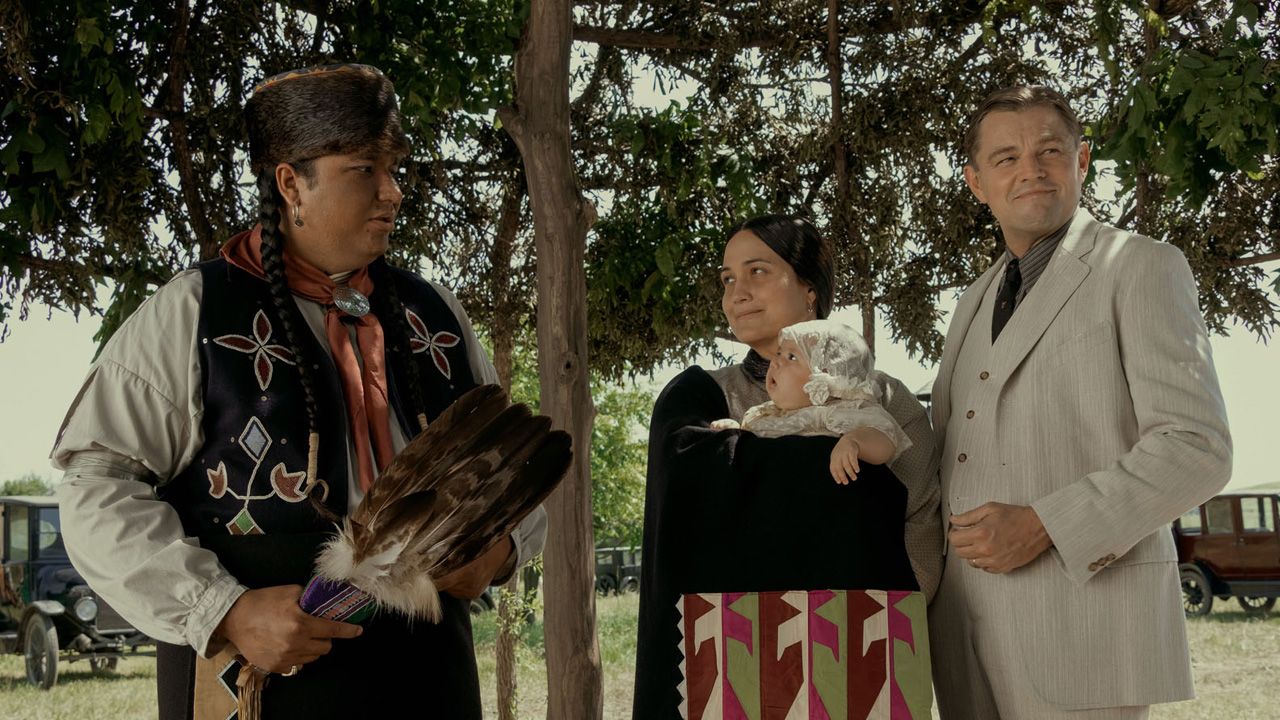On October 18th, Killers of the Flower Moon arrived in cinemas in France. Martin Scorsese’s feature film, which ran for 3 hours and 26 minutes, was a risky bet for Paramount. Three weeks later, the film starring Robert De Niro and Leonardo DiCaprio crossed the million mark.
Getting past this fateful milestone is a feat for such a long and prolific work that chronicles a dark episode in United States history. Scorsese himself was annoyed by criticism of the length of the film and believed that cinema should be respected.
The legendary Taxi Driver director, who was recently mocked by Avengers Endgame director Joe Russo, has often criticized Marvel’s hegemony in cinema, sparking much debate. So it’s funny to point out that the Flower Moon Killers have a connection to a famous superhero comic book.
From Scorsese to Black Panther
In Scorsese’s work, the story follows the Osage tribe, a Native American community that made its fortune in the 1920s from the discovery of oil on their lands in Oklahoma. The latter have a very rich spiritual culture, worshiping the gods through various sacred rituals.
One of the “deities” worshiped by the Osages is called Wakonda, or Wah’kon’ta; This is the great creative power of the Osage, Omaha and Ponca tribes. According to these Native American clans, Wakonda is an abstract and omnipresent creative force. It means “mysterious” in the language of these tribes.
For fans of the Marvel Universe, another spelling will be more important: Wakanda. Invented by Stan Lee and Jack Kirby, this fictional country is the ancestral home of the Black Panther. The origin of this name is not officially known; However, one theory explains that the authors were inspired by the Native American god Wakonda.
Creator God
Although this name can be translated as “mysterious” for the Osage, Omaha, and Ponca classes, it also has meaning for the Dakota. For them, it is “the invisible omnipresence of life forces.” He is also the personification of Dakota, the creator. Note that Wakanda is also a variation of “Wakan Tanka”, the large “Manitu” of the Algonquins. Additionally, to the Lakota Native Americans, Wakonda means “power from above.”
Wakanda is also a female name of North American origin. To the Sioux people, it means “the magical power within.” All of this supports the idea that Stan Lee and Jack Kirby were inspired by Native American culture to create Wakanda. Indeed, this fictional country bears similarities to Native American tribes, especially in its spiritual folklore.
For example, according to Wakandan tradition, there is an astral dimension where the soul resides after death. This is where black panthers can go to talk to their ancestors after taking the heart herb. We can see sequences taking place on this spiritual astral plane in the MCU movies.
The idea of a “great mysterious force” like the Black Panther and a dreamlike world in which one can communicate with the dead is very reminiscent of sacred Native American rituals. Thus, Stan Lee and Jack Kirby cleverly influenced their comics by using African and Native American cultures; Then they mixed it all together to create Wakanda and the rich and interesting world that revolves around it.
black panther
Finally, it should be noted that the story of a black man raised by Indians could also have been a source of inspiration for Marvel writers. In 1864, writer Frederick Charles Lascelles Wraxall published a novel titled. Black Panther: A Boy’s Adventures Among the Redskins.
The story follows the adventures of a young black boy named Percy; The latter is kidnapped by a group of Indian American warriors and taken to their village. There he was adopted by the tribe and named “Black Panther”. As he grows up in the clan, Percy learns their customs and adopts their way of life. He becomes a skilled hunter and warrior who earns the respect of his adoptive family.
However, his peaceful life is interrupted when a group of white men arrive in the area, threatening the lives of the tribe. Percy finds himself torn between his loyalty to his people and his desire to protect them from the colonists. The young man will have to navigate the complex relationship between the two groups and find a way to reconcile their differences before it’s too late.

between Africa and America
Finally, other theories note the influence cannibals, a novel written by Edgar Rice Burroughs in 1915 and published posthumously in 1957. It features a fictional African tribe that inspired Stan Lee and Jack Kirby. The name Wakanda is also derived from the Kenyan tribe Kamba, Akamba or Wakamba or from the word “kanda” which means “family” in Kikongo.
We’ll probably never know the end of the story, but deciphering all these different inspirations is fascinating. Either way, if you want to immerse yourself in Osage culture and discover a lesser-known part of American history, go see Killers of the Flower Moon in theaters.
Source: Allocine
Rose James is a Gossipify movie and series reviewer known for her in-depth analysis and unique perspective on the latest releases. With a background in film studies, she provides engaging and informative reviews, and keeps readers up to date with industry trends and emerging talents.






